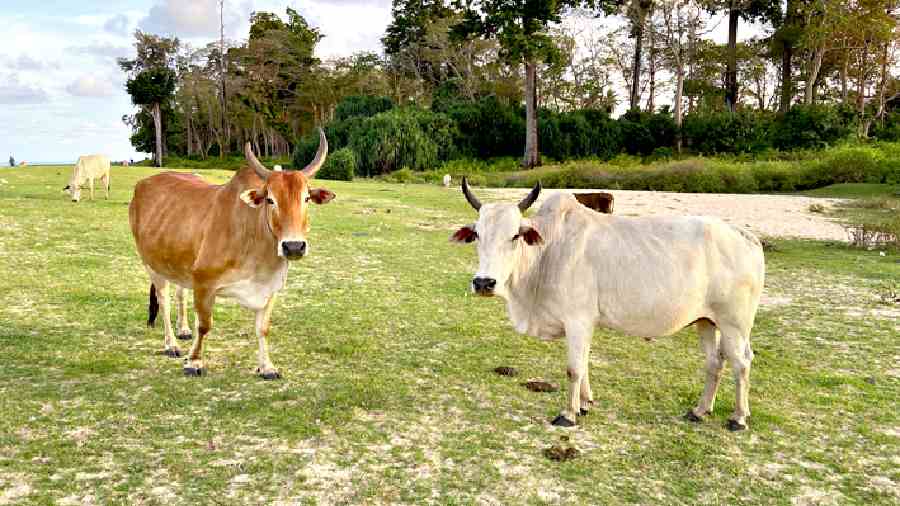A genetic study on cattle on the Andaman islands has revealed a unique mixed ancestry that scientists say is the outcome of bidirectional movements of cows between the Indian subcontinent and Southeast Asia, spanning centuries.
The study has found that present-day Andaman cattle have genetic signatures of both the zebu, an indigenous cattle domesticated on the Indian subcontinent over 6,000 years ago, and cattle from Southeast Asia shipped to the islands between the mid-18th century and the mid-20th century.
“Archaeological data shows that people migrated in waves from India to Southeast Asia centuries ago,” said Arun Kumar De, a scientist at the Central Island Agricultural Research Institute, Port Blair.
“The genetic profile of Andaman cattle provides fresh evidence of such migrations.” De and his colleagues analysed the genetic profile of 150 heads of cattle from various parts of the Andaman and Nicobar Islands and found high genetic diversity and low levels of inbreeding, indicating gene flow from other cattle. They have also found evidence of historical migrations.
“The genetics tells us that people migrated with cattle, the migrations starting as early as during the Indus Valley era,” said De, who led the study, described as the first insight into the genetic ancestry of Andaman cattle. “And they used the islands as halting points, often leaving cattle behind.”
The scientists have found an extremely rare genetic signature, denoted as the Q haplogroup and linked to ancient cattle, in the Andaman cattle.
The Q haplogroup indicates that the Andaman cattle originated from the zebu, domesticated from the now-extinct aurochs on the Indian subcontinent over 6,000 years ago. The findings have been published in the journal PLOS One.
Earlier studies had proposed south India, Gujarat and the Gangetic region as potential centres of zebu domestication, and archaeological evidence had established the presence of zebu cattle throughout the Indus Valley more than 5,000 years ago.
Historical evidence also supports the idea of maritime trade between India and Southeast Asia as early as 3,500 years ago.
The genetic study has indicated that cattle from the Indian subcontinent were shipped to Southeast Asia during those voyages.
The Andaman cattle also have genetic signatures of cattle from Southeast Asia which the scientists say are the result of the British, Danish and Japanese bringing cattle and poultry breeds into the Andaman and Nicobar Islands between 1755 and 1947.
But over the past decades, as countries adopted animal quarantine laws and all such animal transfers stopped, the Andaman cattle have acquired a unique genetic profile, De said.











